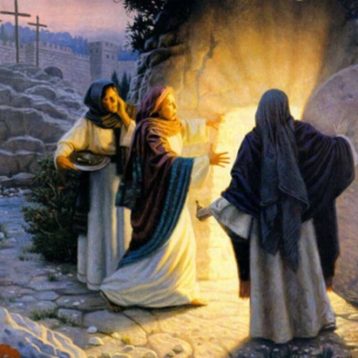Traditionally at this time of year thousands of new Christians are baptised all over the world. A young man baptised recently was asked, “Do you feel different now that you are baptised and a Christian?” “Yes,” he replied,” I went from believing nothing to believing everything sort of vaguely. I hope God will make things clearer to me as I continue on this journey.”
Easter is a good time to reaffirm our faith. The Resurrection is the culmination of Christ’s journey on this earth, and the beginning of our journey in faith. Our journey begins with belief in the Resurrection, but approaching the ‘Empty Tomb’ isn’t easy. Who moved the stone we wonder. Why were the linen wrappings removed, and why was the cloth that wrapped Jesus’ head rolled neatly and placed separately? In our modern day times of detective stories and forensic science there is an inclination to turn the empty tomb into a crime scene, but the problem with looking at the empty tomb from an investigative point of view is that we’re in danger of missing a greater truth, and the amazing implications of a Resurrection that was after all predicted.
If we were to fully embrace the reality of the Easter story we would pour out of church bouncing with a newfound enthusiasm for life. So how do we embrace the reality of a story for which there is no proof? Jesus promised all along that death couldn’t contain us, and the empty tomb points to this not necessarily as proof, but as something that was promised. Why therefore, in the context of everything else that Jesus did and said, should this surprise us?
The empty tomb gives our life purpose. Belief in the resurrection means we can live life boldly and well, looking forward to eternal life. The empty tomb gives us a means to deal with pain and suffering, it means that death is not a meaningless end of life, but the door to the fullness of life with the risen Christ.
